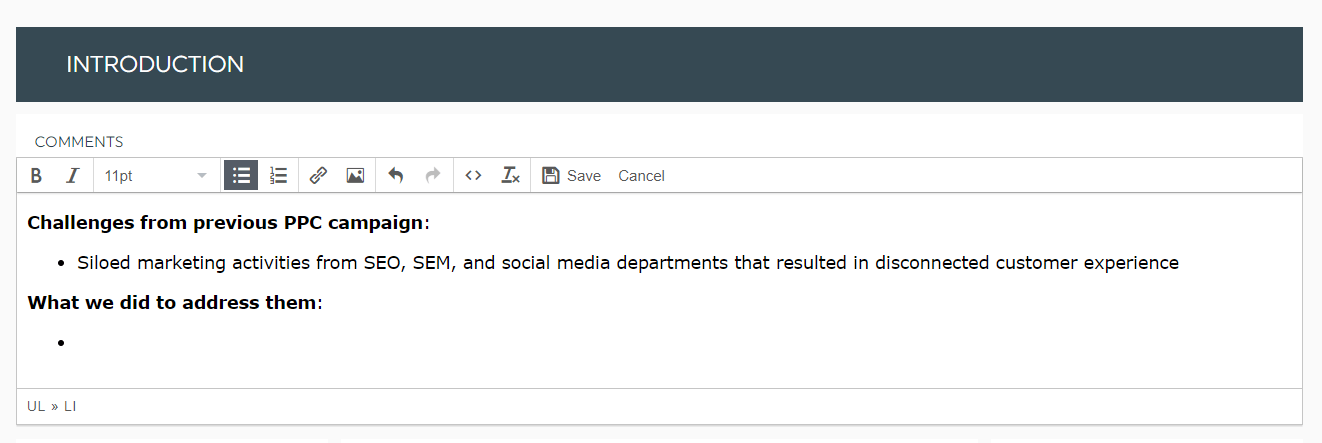Cracking the Code: Demystifying PPC Client Reports for Success

The last thing you need is a freaked-out client demanding you to shut down the ads.
With PPC ads costing $300 to $100 million a month, it’s getting harder to get your money's worth.
Today, you’ll learn how to create a PPC client report with the metrics that matter most to your client’s business while (hopefully) reducing ad spend.
- What is a PPC Client Report? We Explain in 15 Seconds.
- 4 Key Elements of a PPC Client Report (Launch Your Expertise into the Limelight)
- How to Create Exceptional PPC Reports for Clients
- Best Practices for Effective PPC Client Reporting that Wow Clients
- Automate Your PPC Reporting with DashThis Today!
What is a PPC Client Report? We Explain in 15 Seconds.
A PPC client report tracks PPC (pay-per-click) performance across multiple ad accounts and campaigns into one place.
Depending on the reporting software you use, you can either track them individually (e.g., Bing ads in one report and LinkedIn and Facebook ads in another) or gather all of them in one place.
Note the PPC client report below. It analyzes Google ads and Facebook ads performance in a single interface.
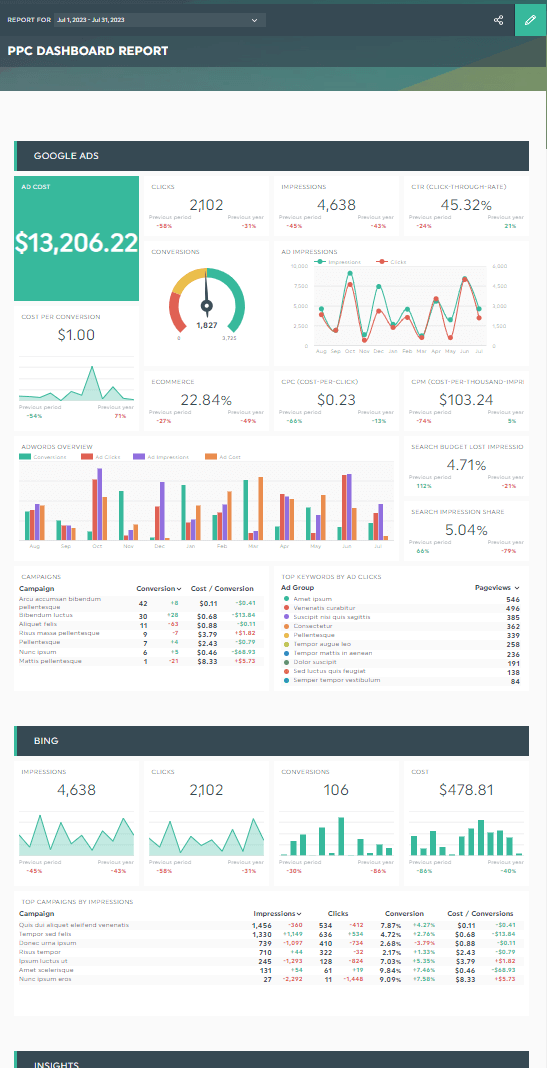
Ad spend can cost anywhere from $300 to $100 million monthly.
Gathering different ad campaigns across multiple channels into one report lets you quickly identify what works, adjust your strategy, and make the most of your budget.
4 Key Elements of a PPC Client Report (Launch Your Expertise into the Limelight)
Clients hire agencies based on industry domain expertise, clear communication, and return on investment. Add these four elements to your client report to communicate the hard-won results of your PPC marketing campaigns.
Punchy Summary of Campaign Objectives and Goals
Business goals determine the overall PPC strategy, from identifying value keywords to structuring the ad account accordingly.
Unearth these goals in the client onboarding questionnaire and internal kickoff meeting. And include them right at the top to set the stage for the report.
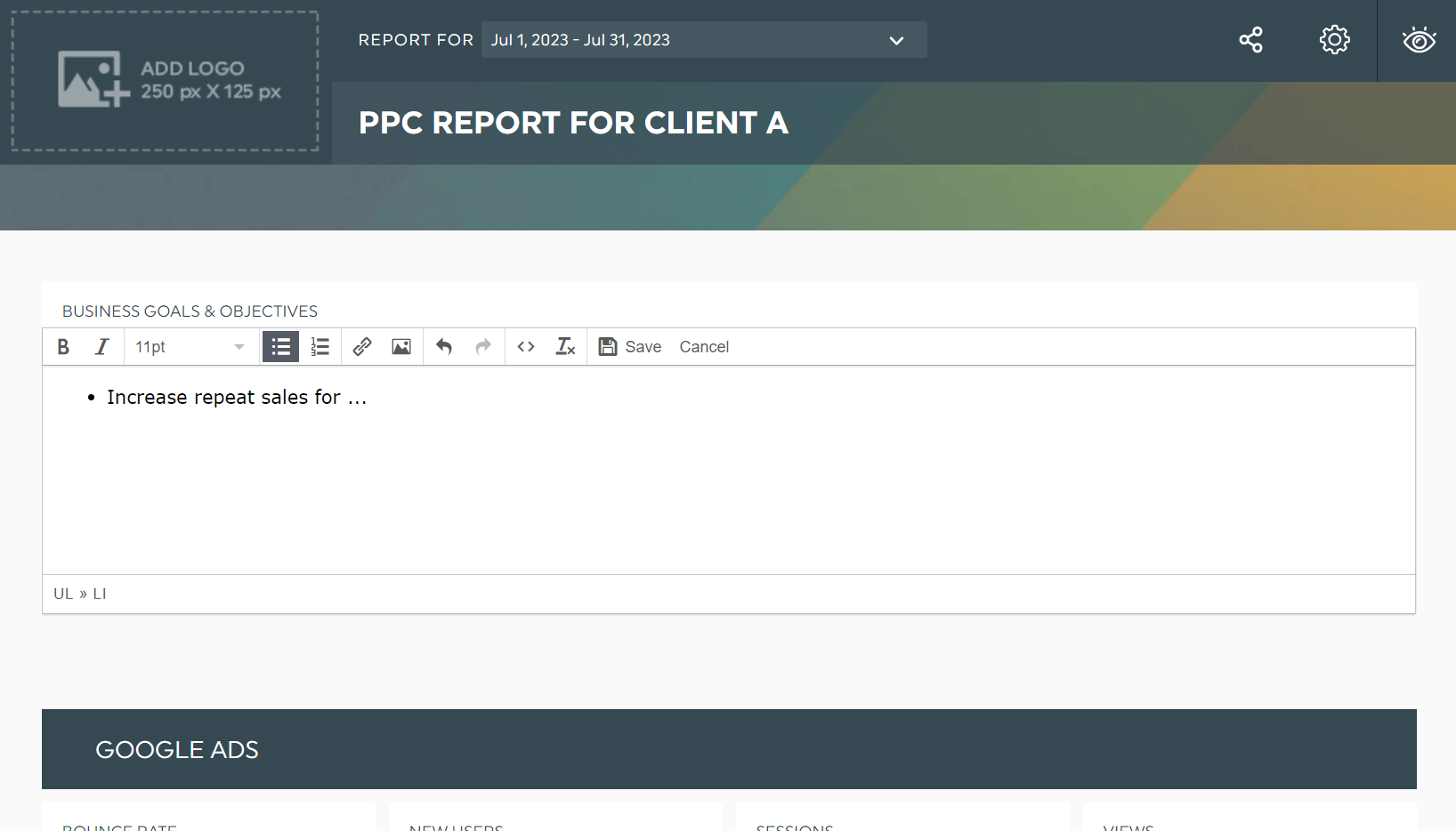
Visual Representation of KPIs and Metrics
After determining the campaign goal, set the key performance indicators (KPIs) and metrics to measure the progress of your PPC campaigns.
Note the following PPC reporting metrics don’t encapsulate the entire strategy. But they serve as a starting point if you’re new to creating PPC reports for clients.
(i) Click-through rate (CTR)
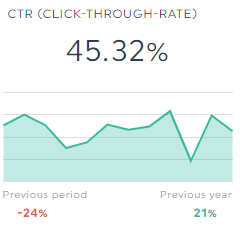
Click-through rate (CTR) is the percentage of clicks an ad receives from all users who see it.
Unless you optimize the CTR, improving your conversions and sales is inherently impossible.
To improve this metric, consider audience targeting, messaging, or even your remarketing strategy.
When Navattic added a public interactive demo as a sitelink in its warm retargeting ads, it achieved a 30% CTR for branded searches (DashThis explains: this tracks, as people already exposed to your brand are more likely to convert to the next step).
(ii) Cost per click (CPC)

Cost per click (CPC) is the price paid for each ad click.
Ensure you have the following information before setting your CPC, according to several marketing agencies:
- Target number of deals/sales per month
- Target customer acquisition cost ([cost of sales + marketing] / number of new customers acquired)
- Total ad budget (target number of closed deals per month X target customer acquisition cost)
- Target number of deals per month
- Conversion rate from 'visitor to demo' (number of conversions / total number of ad interactions)
- Number of clicks needed per month (demos per month needed / visitor to demo conversion rate)
Once you get ahold of these information, calculate your CPC using this formula:
Target CPC = total ad budget / number of clicks per month needed
(iii) Conversion rate (CVR)
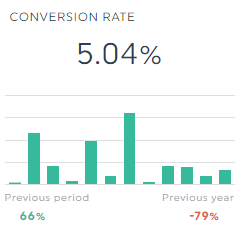
Conversion rate is the percentage of users who completed an action measured against the total number of visitors over a specific time.
Selling a complex or high-ticket product? Go beyond the standard bidding and targeting strategies to improve CVR.
Research what customers care about to improve the landing experience.
When a fintech SaaS startup discovered customers were experiencing anxiety in financial matters, it played up the core emotion of its ad copy and tripled the conversion rate.
(iv) Return on ad spend (ROAS)
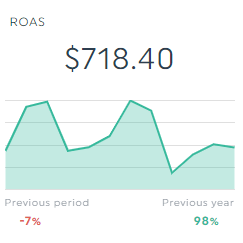
Return on ad spend (ROAS) refers to the revenue you get back for each dollar spent on advertising.
Improve retargeting to reduce ad wastage. Break down your audience into categories (e.g., shoppers who abandoned carts, Black Friday shoppers) and test different messaging across the remarketing funnel.
(v) Quality score

Quality Score stacks up your ad quality against other advertisers on a scale from 1 to 10.
Note that this is a diagnostic tool, unlike the other metrics on this list.
Quality Score is calculated based on expected CTR, ad relevance, and landing page experience. A healthy score sits between 7 and 10.
Consider using single keyword ad groups to improve this metric. Paid media agency DemandMore improved its Quality Score from 5.56 to 7.95 after implementing single keyword ad groups for its top 20% keywords.
(vi) Impression Share
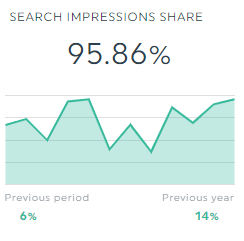
Impression Share refers to the percentage of impressions an ad receives compared to the total number of impressions it could get. If you win all the biddings, you get a 100% Impression Share.
Alright!
You now know the key metrics to focus on.
Long gone are the days of analyzing endless rows and columns of raw data in Microsoft Excel.
Combine these PPC metrics into a single report to analyze your performance at a glance.
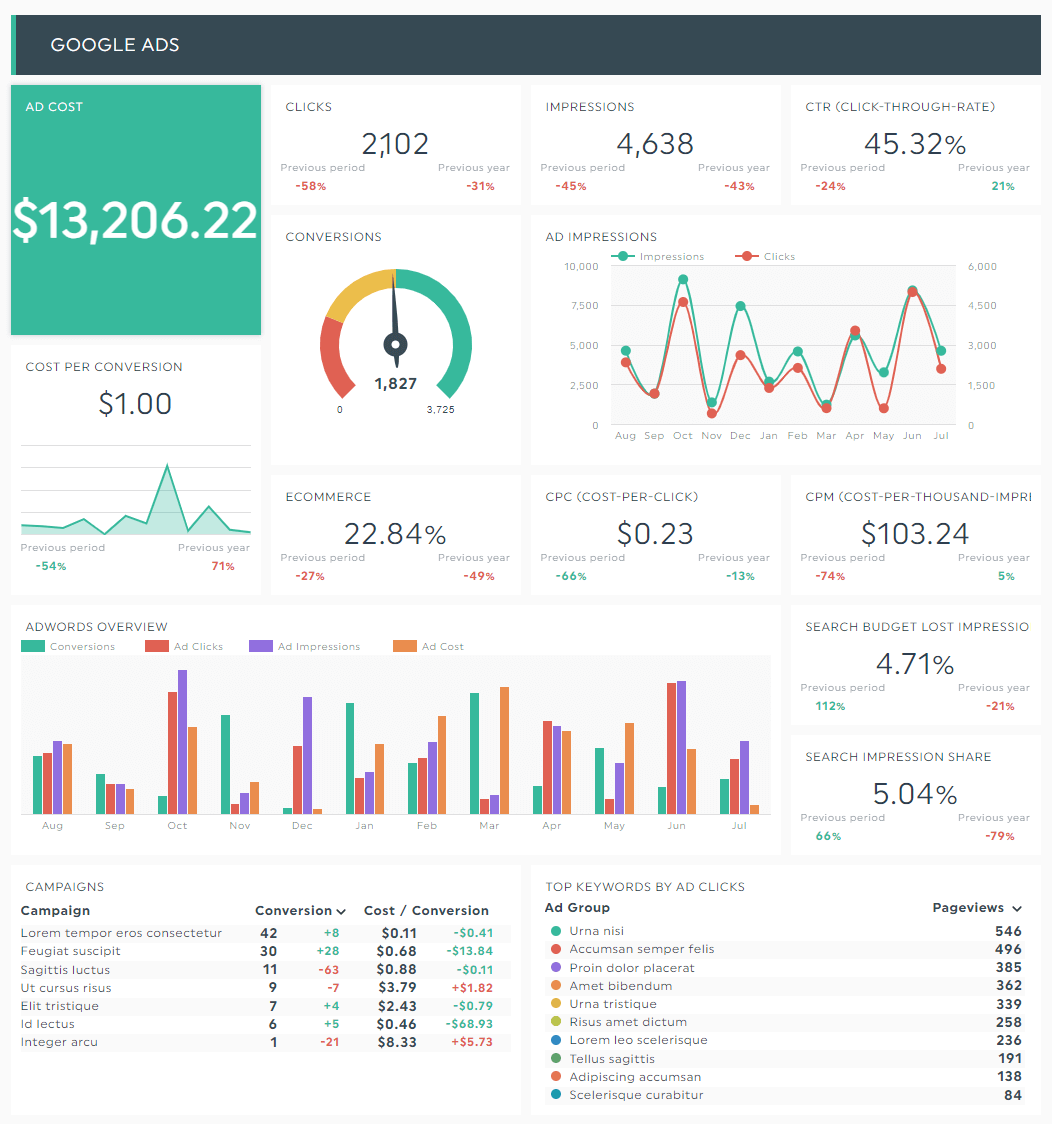
Grab this PPC template with your own data!
Notice how the PPC report template turns a bunch of complex marketing data into digestible graphs.
It takes seconds to understand the ads performance.
Quick Snapshot of Audience Insights
Conversions improve when you understand how buyers interact with your ads across the customer journey.
Dig into the audience segments that view your ads and convert them to customers—spotlight visitors who converted the most by narrowing down their characteristics, interests, and behaviors.
Complete Ad Performance Analysis
You’re ready to distill the performance metrics into actionable insights. Include your answers to these questions at the end of the report:
- Did it meet or exceed the client’s objectives?
- If it did, what were the reasons behind it?
- How will you replicate the strategies to maintain the momentum?
- If it failed to meet the client’s objectives, what steps will you take to improve the next ad campaigns?
- What potential roadblocks do you anticipate, and how will you overcome them?

These questions help you reflect on what to focus on next and show clients you’re proactively driving growth.
How to Create Exceptional PPC Reports for Clients
There are two ways to create PPC reports for clients.
Option A: spreadsheets. This option will suffice for micro agencies monitoring a handful of ad accounts.
However, suppose you run a bigger PPC agency with multiple HUGE accounts with hundreds of campaigns, ad groups, and keywords. In that case, you’ll need Option B: an automated PPC reporting tool to streamline your reporting process.
Data overload makes it challenging to track and analyze campaign performance accurately.
With an automated marketing reporting software, you can auto-grab data across multiple channels into one beautiful report. This saves you the hassle of manually grabbing them from one account at a time.
So, what features should you look for in a PPC reporting software?
After working with agencies across 122+ countries, we discovered agency marketers look for the following features:
- Native integrations
- Unlimited users, client accounts, and data sources
- All-in-one dashboard that helps you evaluate data across all clients as a whole
- Eye-catching templates with pre-built metrics
- Multiple sharing options (including automatic email dispatch)
DashThis is the easiest reporting tool that ticks all these boxes.
Let’s explore how creating a PPC client report looks on DashThis:
- Select the PPC dashboard template
- Connect your data sources (note: DashThis currently offers 40+ integrations like Google Analytics, Bing, and Facebook Ads)
- Choose your metrics in Preset Widgets
Sit back, while the reporting software auto-grabs your PPC data into the report. Drag and drop them as you see fit.
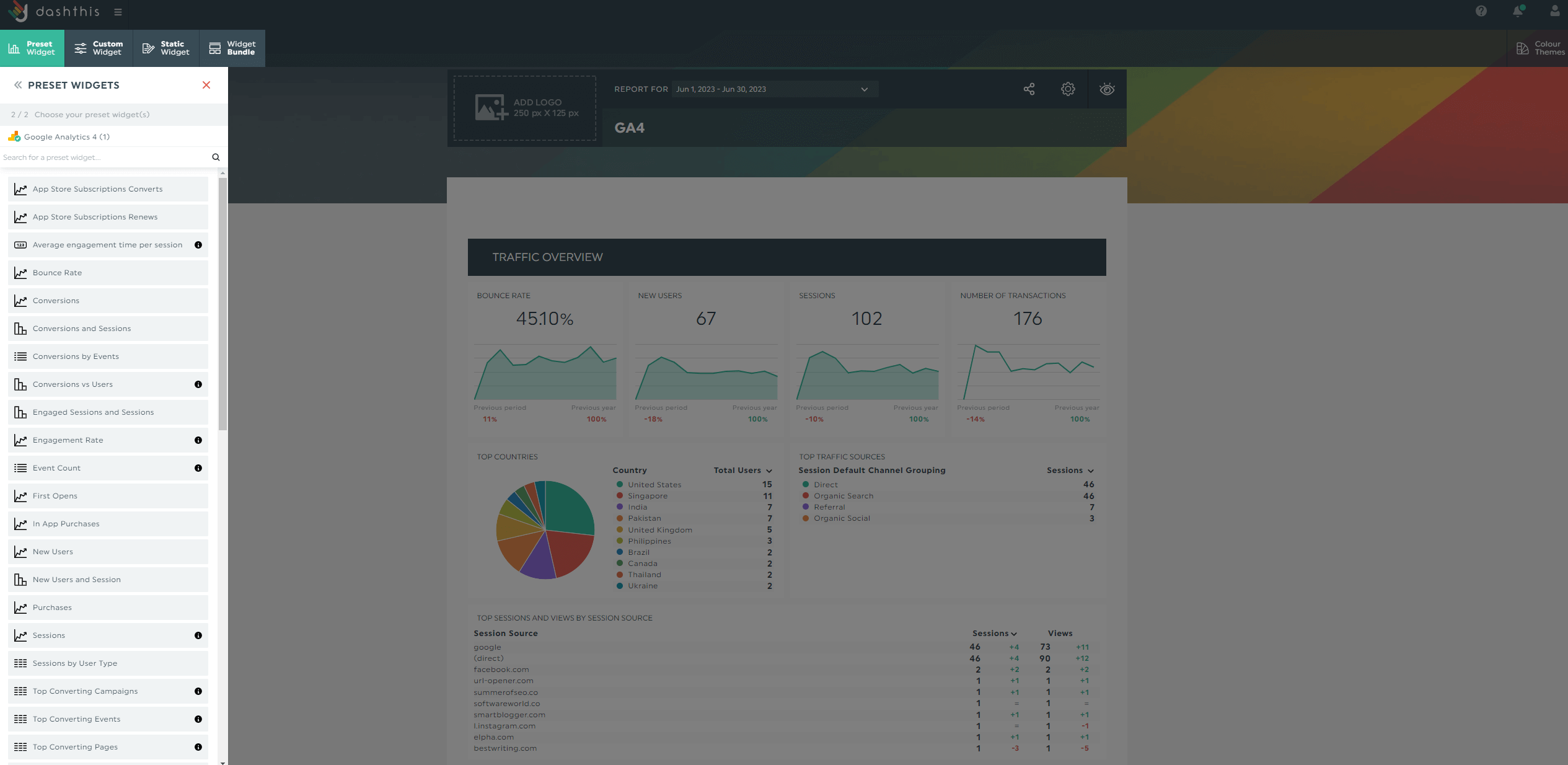
DashThis is the easiest reporting tool. Try it free for 15 days to automate your PPC reporting today.
Best Practices for Effective PPC Client Reporting that Wow Clients
Great reports leave no questions behind. Follow these best practices to make informed decisions, free up time, and improve client relationships.
Set clear expectations and goals (no guesswork!)
Know your numbers early on.
Without an objective view of your baselines, says Marc Thomas, former head of growth at Powered by Search, you’re forced to make guesswork based on industry benchmarks—which is a terrible way to grow as every company and situation is different.
Rally all stakeholders to work out your baselines for acquisition, cost per click, etc. These numbers will help you make better decisions for your PPC marketing campaigns.
Establish a reporting schedule and be a stickler for it
Set clear expectations with clients on when to expect and stick to the reports.
Use tools like FollowUp to ensure reporting doesn’t slip through the cracks. Set timed reminders that arrive at the top of your inbox and reach out with the latest report at the right moment.
Better yet, schedule an automatic email dispatch via DashThis to gain back hours of your time.
Click the Sharing Options icon > Share by Email and include relevant information. This “set it and forget” mode lets you select your preferred reporting frequency (e.g., weekly, biweekly, monthly).
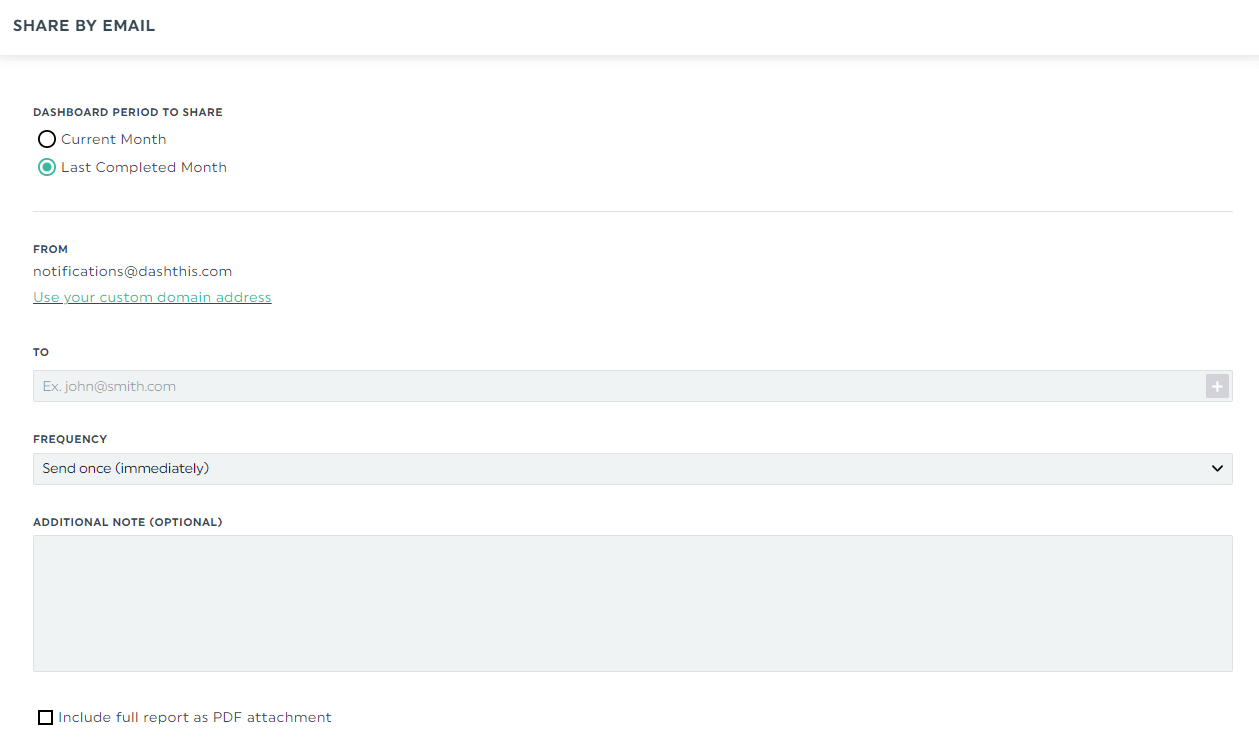
Alternatively, send a shareable URL link for clients to view the report. Both sharing options let them view in real-time in different periods.
Customize reports based on client’s cup of tea
Agency marketers who spend hours educating clients often find themselves frustrated.
Remember that one client who expects likes, shares, and follows AND traffic and conversions in one campaign? smh.
One way to combat these incessant questioning and requests is tailoring the report according to the client’s preferences or level of expertise.
For example, adding notes within the report to explain why you're focusing on specific metrics.
Say you’re working with a client who doesn’t understand PPC advertising. Add a note next to a metric to explain how it reduces ad wastage and impacts the overall strategy.
On DashThis, hover to the metric and click the Dropdown Arrow icon > Add Note > Save.
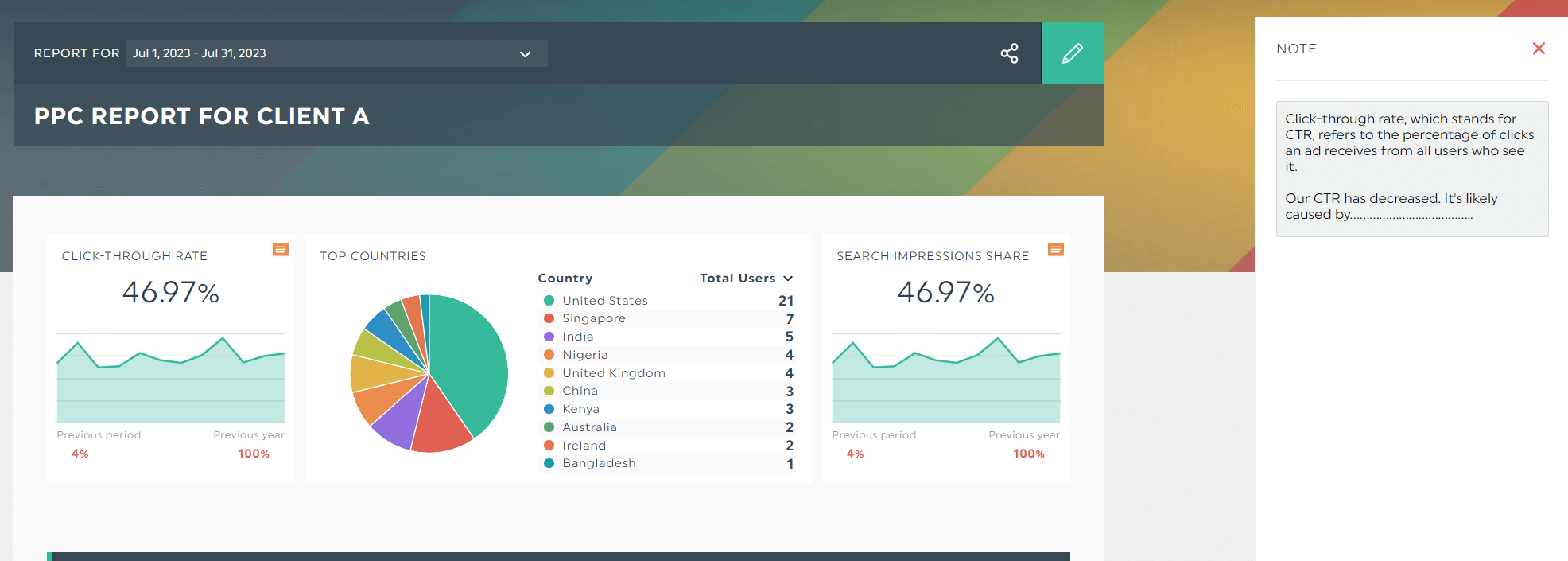
Your note will appear as an orange tab in view mode. To access it, all clients need to do is click it.
Pro tip: Create executive reports in addition to the PPC reports, even if you don’t work directly with the CMO. This, according to several PPC professionals, helps the in-house team justify the relationship to the CMO and might even reduce client churn in the long run.
Address client feedback and concerns head-on—don’t waver!
With every client feedback you receive, you have the opportunity to widen your industry expertise, grow your own library of knowledge, and build a home-field advantage for your agency.
Address these concerns head-on and surface them right at the top of the report.
Say an ecommerce client expresses concerns about their siloed marketing activities. You might suggest integrating SEO, SEM, and social media in a holistic strategy.
To do this on DashThis, add Static Widget > Comment and share your marketing strategies for the next campaign.
Automate Your PPC Reporting with DashThis Today!
Ads are expensive, especially for brands selling high-ticket and complex products. A PPC client report helps you identify top-performing campaigns and value keywords, reducing ad wastage in the long term.
DashThis is the easiest reporting tool. Gather your PPC ad accounts, campaigns, ad groups, and keywords into one dashboard automatically.
Pricing starts at $38/month when billed annually. Try it free for 15 days today.
Ready to create awesome PPC reports for your clients?
Read More
Don’t miss out!
Automate your reports!
Bring all your marketing data into one automated report.
Try dashthis for free